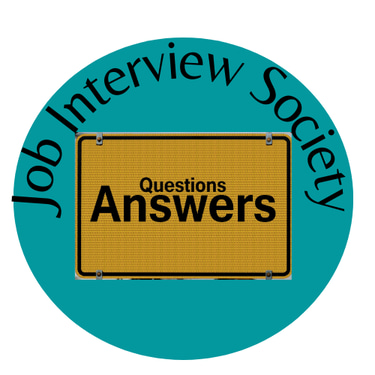Mastering Strengths and Weaknesses in Interviews
Learn how to effectively answer the common interview question about your strengths and weaknesses. Discover essential job interview tips to impress employers and showcase your skills.
COMMON INTERVIEW QUESTIONS
12/1/20244 min read


Understanding the Importance of the Question
During job interviews, one of the most frequently asked questions is about a candidate's strengths and weaknesses. This inquiry serves multiple critical purposes for employers, allowing them to gain insights beyond the resume. Firstly, it assesses a candidate's self-awareness. An individual who can accurately identify their strengths demonstrates confidence and clarity about their capabilities, while also recognizing areas for improvement. Such self-reflection is vital, as it signals the potential for personal growth and aligns with the organization's values of development and continuous learning.
Moreover, discussing strengths and weaknesses offers employers a glimpse into a candidate's honesty and integrity. When an applicant openly acknowledges their weaknesses and cites genuine examples, it reflects a sense of authenticity. On the other hand, an overly rehearsed or vague response may suggest a lack of self-reflection or an attempt to mask deficiencies. Thus, the way candidates approach this question can provide valuable insights into their character and overall fit for the organization.
Additionally, the question can give employers a framework for understanding how the candidate's strengths can contribute to the company culture. Each organization has its unique ethos, and the traits that an applicant perceives as strengths should ideally align with the company’s mission and values. This alignment is crucial for fostering teamwork and enhancing productivity within the organization. Analyzing how candidates perceive their strengths and weaknesses facilitates a deeper understanding of their thought processes, enabling employers to assess their potential for growth, adaptability, and contribution in the workplace.
In conclusion, employers ask about strengths and weaknesses not merely for curiosity but as a means of evaluating a candidate's self-awareness, honesty, and cultural fit, providing insight into how they perceive themselves and their potential contribution to the organization.
Identifying Your Strengths
Understanding one's strengths is a critical component of professional development and successful job interviews. To effectively identify your strengths, it is essential to engage in self-assessment and reflection, which can be achieved through various strategies. One effective method is maintaining a journal to document your achievements and experiences. By writing down specific instances where you have excelled, you can gain insights into patterns of success that indicate your unique strengths.
In addition to journaling, seeking feedback from peers, mentors, or supervisors can provide a well-rounded understanding of your strengths. These individuals may recognize your capabilities that you might overlook due to a lack of objectivity. Constructive feedback can highlight skills such as collaboration, problem-solving, or adaptability, enabling you to cultivate a comprehensive profile of your professional attributes.
Another useful approach is utilizing self-assessment tools, such as online surveys or quizzes designed to help individuals discover their strengths. These tools often employ scientifically validated questions that measure various competencies and can shed light on both hard and soft skills. Once you have a clearer picture of your strengths, it is crucial to align them with the requirements of the jobs you are pursuing.
To interface your strengths with potential job roles, carefully review the job descriptions and required skills. By mapping your identified strengths to the specific competencies sought by employers, you can tailor your responses during interviews. For example, if a position highlights leadership skills and you possess demonstrated experience in guiding teams, be sure to articulate these strengths effectively. By aligning your strengths with job requirements, you will present yourself as a well-suited candidate, showcasing your potential contributions to the organization.
Acknowledging Your Weaknesses
When preparing for the common interview question regarding strengths and weaknesses, it is essential to approach the topic of weaknesses thoughtfully. Recognizing and articulating your weaknesses can be a constructive exercise that demonstrates self-awareness and a commitment to personal growth. First, it is crucial to identify a genuine weakness that will not jeopardize your candidacy for the desired position. This requires introspection and evaluation of your skills and experiences. Consider aspects of your professional abilities that may require further development, such as technical skills, time management, or public speaking.
Once a relevant weakness has been identified, the next step is to frame it in a manner that emphasizes your proactive approach to overcoming it. Rather than presenting the weakness as an insurmountable flaw, discuss how you have recognized this area for improvement and the steps you are taking to enhance your skills. For instance, if you struggle with public speaking, you might mention enrolling in a local Toastmasters club or participating in workshops tailored to improve presentation skills. This approach not only highlights your weakness but also demonstrates your dedication to personal development and adaptability in the workplace.
Additionally, it is beneficial to share specific examples of how you have mitigated the effects of your weakness in previous roles. This could involve illustrating how you utilized organizational tools to improve time management or sought feedback from colleagues to enhance your performance. By doing so, you effectively convey your resilience and positive attitude toward self-improvement, which are valuable traits in any professional setting. Remember, discussing your weaknesses is an opportunity to present your journey of growth, ultimately portraying a balanced and authentic self to potential employers.
Crafting Your Response
Effectively responding to the interview question regarding your strengths and weaknesses requires careful preparation and thoughtful structure. One of the most efficient methods to craft your response is by employing the STAR method, which stands for Situation, Task, Action, and Result. This technique not only organizes your thoughts but also allows you to provide concrete examples that demonstrate your strengths in a tangible manner.
Begin by identifying a specific situation from your past where you successfully utilized your strengths. Describe the task you faced, followed by the actions you took to address it, and conclude with the results that stemmed from your efforts. This not only highlights your strengths but also showcases your problem-solving skills and ability to contribute positively to a team or project. Make sure the examples you choose are relevant to the role you are applying for, aligning your strengths with the requirements of the position.
When discussing weaknesses, it is vital to approach the subject with a growth mindset. Select a genuine area where you have faced challenges, but also highlight what actions you have taken to improve. This could include training you pursued, feedback you actively sought, or specific strategies you implemented to overcome obstacles. Emphasizing your commitment to personal development signals to the interviewer that you are self-aware and dedicated to growth.
Practicing your responses in advance can significantly improve your confidence during the interview. The more comfortable you are with your narrative, the more authentically you can present yourself. Additionally, be cautious of common pitfalls, such as downplaying your strengths or being overly critical about your weaknesses. A balanced and authentic response will convey both your capabilities and your potential for growth, leaving a lasting positive impression on the interviewer.
